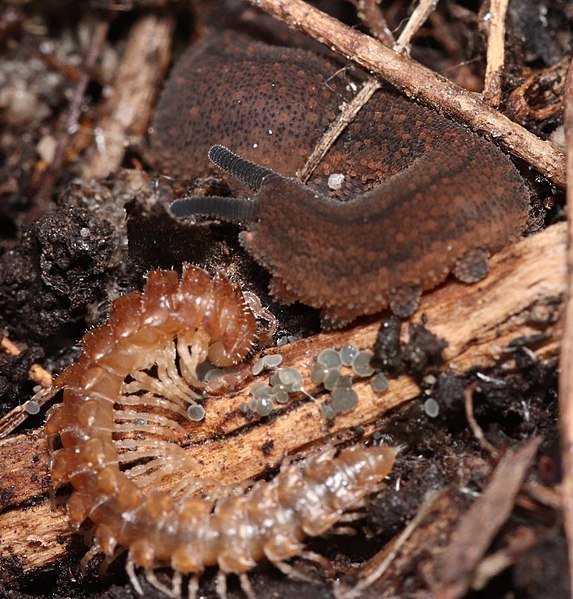Lobopodians are members of the informal group Lobopodia, or the formally erected phylum Lobopoda Cavalier-Smith (1998). They are panarthropods with stubby legs called lobopods, a term which may also be used as a common name of this group as well. While the definition of lobopodians may differ between literatures, it usually refers to a group of soft-bodied, marine worm-like fossil panarthropods such as Aysheaia and Hallucigenia.
Fossils of Xenusion, a lobopodian that might have grown up to 20 centimeters.
Fossil of Jianshanopodia decora, showing head region (upper left) compose of robust frontal appendage (right) and pharynx with rows of teeth (bottom left).
Fossilized posterior trunk region of Jianshanopodia decora, showing traces of lobopods, gut diverculae and lobe-like terminal extension.
Fossil of Microdictyon sinicum, showing pairs of sclerite and trace of trunk and lobopods.
Panarthropoda is a proposed animal clade containing the extant phyla Arthropoda, Tardigrada and Onychophora. Panarthropods also include extinct marine legged worms known as lobopodians ("Lobopodia"), a paraphyletic group where the last common ancestor and basal members (stem-group) of each extant panarthropod phylum are thought to have risen. However the term "Lobopodia" is sometimes expanded to include tardigrades and onychophorans as well.
Panarthropoda
Nervous system of a tardigrade, showing ventral nerve cord with segmented ganglia (ga1-4).






